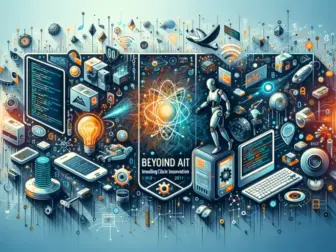Tag - Generative AI
Blog , March 24, 2024 , AIoT Applications, ChatGPT, Future of IoT, Generative AI, Generative AI in IoT, IoT Code Generation, IoT Innovation, Robotics Control, Social IoT Devices
Summary: Generative AI refers to a subset of artificial intelligence that focuses on creating new content, such as images, music, or text, by learning from existing data. It utilizes algorithms and neural networks to generate original and realistic output. Generative AI has numerous applications, including art, entertainment, design, and even drug discovery. However, ethical concerns and potential misuse of this technology also need to be addressed.
Summary:
Generative AI refers to a subset of artificial intelligence that focuses on creating new content, such as images, music, or text, by learning from existing data. It utilizes algorithms and neural networks to generate original and realistic output. Generative AI has numerous applications, including art, entertainment, design, and even drug discovery. However, ethical concerns and potential misuse of this technology also need to be addressed.
Detailed Content:
Generative AI, a subset of artificial intelligence, revolves around the concept of creating new content that appears original and realistic. This technology has gained significant traction in recent years, thanks to advancements in machine learning and deep learning algorithms. By training on vast amounts of existing data, generative AI models learn to create new content that resembles the input data.
One of the popular techniques used in generative AI is generative adversarial networks (GANs). GANs consist of two neural networks: a generator and a discriminator. The generator generates synthetic data, such as images or text, while the discriminator tries to distinguish between the generated content and real content from the training dataset. Through an iterative process, both networks improve their performance, ultimately resulting in more realistic and accurate generated output.
Generative AI has found applications in various fields, including art, design, entertainment, and even drug discovery. In the art world, generative AI has been used to create unique and innovative pieces of artwork. Artists can input specific parameters or themes into the AI model, which then generates artwork based on those inputs. This allows artists to explore new possibilities and push the boundaries of creativity.
In the entertainment industry, generative AI has been used to create music, scripts, and even virtual reality experiences. AI models can generate melodies, lyrics, and even entire orchestral compositions by analyzing vast musical datasets. This technology opens up new avenues for musicians and filmmakers, enabling them to experiment with novel compositions and storylines.
Generative AI also plays a significant role in design and architecture. Architects can leverage generative AI to explore various design alternatives and generate 3D models of buildings, considering factors like site conditions, environmental impact, and user preferences. This allows architects to optimize their designs for efficiency, aesthetics, and functionality.
Moreover, generative AI has increasingly been used in scientific research and drug discovery. AI models trained on large datasets of chemical compounds can generate new molecules with desired properties, potentially accelerating the drug development process. This has the potential to revolutionize the pharmaceutical industry and improve the efficiency of drug discovery.
While generative AI offers numerous opportunities, it also raises ethical concerns. The technology can be misused to create deepfakes, manipulate information, or spread disinformation. There is a need for regulatory frameworks and ethical guidelines to ensure responsible use of generative AI. Additionally, issues related to bias, privacy, and ownership of generated content need to be addressed to prevent any misuse or negative consequences.
In conclusion, generative AI is a powerful technology with wide-ranging applications in art, entertainment, design, and scientific research. It enables the creation of new and innovative content by leveraging the power of machine learning and neural networks. However, its use should be accompanied by ethical considerations and regulations to avoid potential misuse and protect individuals from the negative impacts of generative AI.
